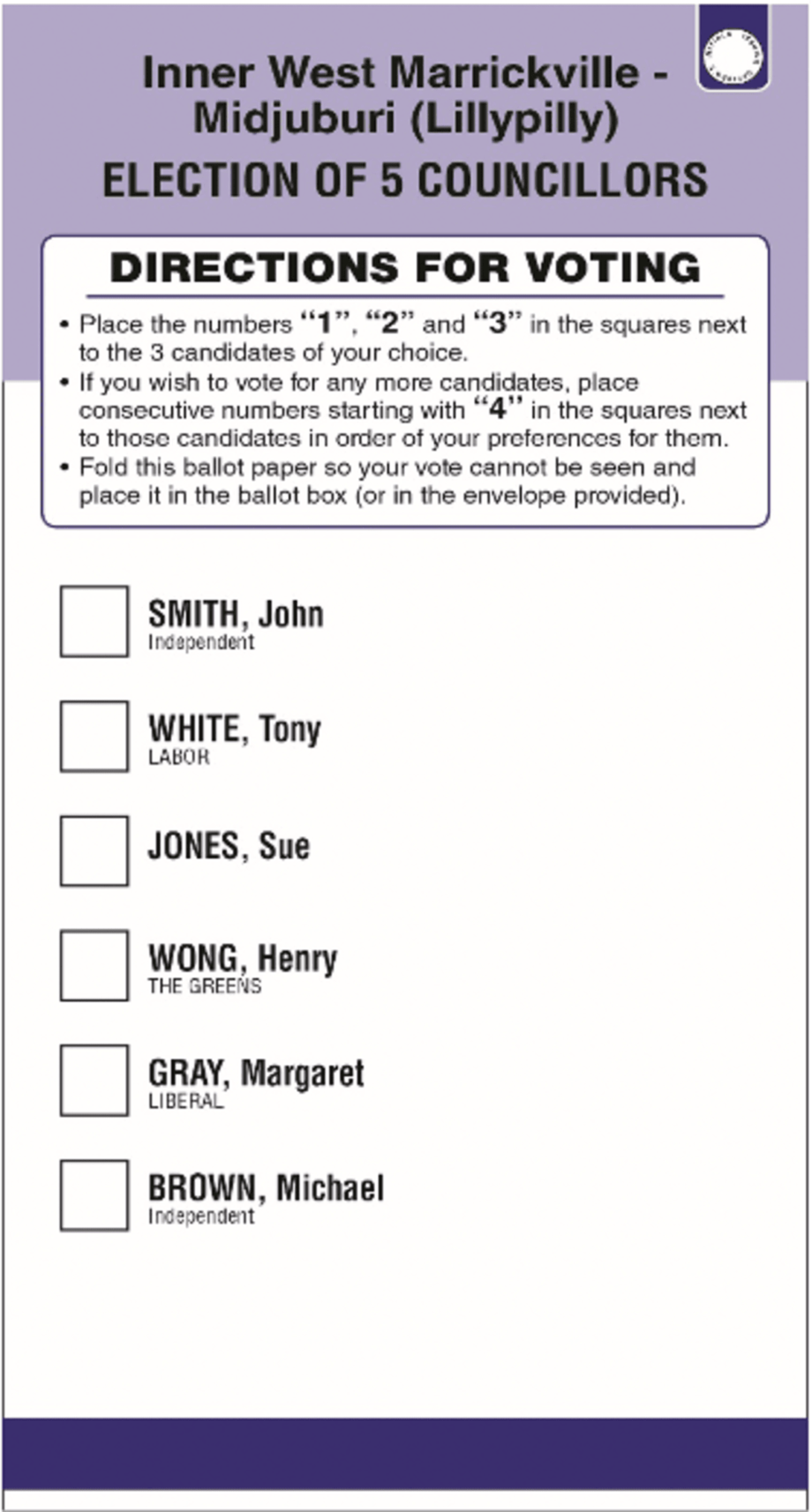You will see your paper is divided in two by a thick line with group vote squares above the line and candidate line below it.
You can vote above the line or below the line but not both.
Above the line
Put a number ‘1’ in one of the group voting squares above the thick line on the ballot paper.
By doing this you are voting for that whole group of candidates in the order they are listed below that square, starting from the top.
This is all you need to do. You can keep numbering if you want, starting with putting number 2 above the line.
If you vote above the line, do not put numbers in any squares below the line.
Below the line
Vote below the line if:
- you want to vote for candidates within a group in the order of your choice.
- you want to vote for candidates from different groups in the order of your choice.
- you want to vote for ungrouped candidates in the order of your choice.
- you want to vote for a mixture of grouped and ungrouped candidates.
To vote, you must place at least the number of preferences indicated in the ‘Directions for Voting’ on the ballot paper. This will be at least half the number to be elected.
For example:
- if there are three to be elected, you must vote for at least two candidates.
- if there are nine to be elected, you must vote for at least five candidates.
You may then continue to number more candidates if you wish.
Your first preference is indicated by placing a ‘1’ in the square next to the candidate of your choice, your second preference a ‘2’, your third preference a ‘3’, and so on.
If you vote below the line, do not put numbers in any squares above the line.




